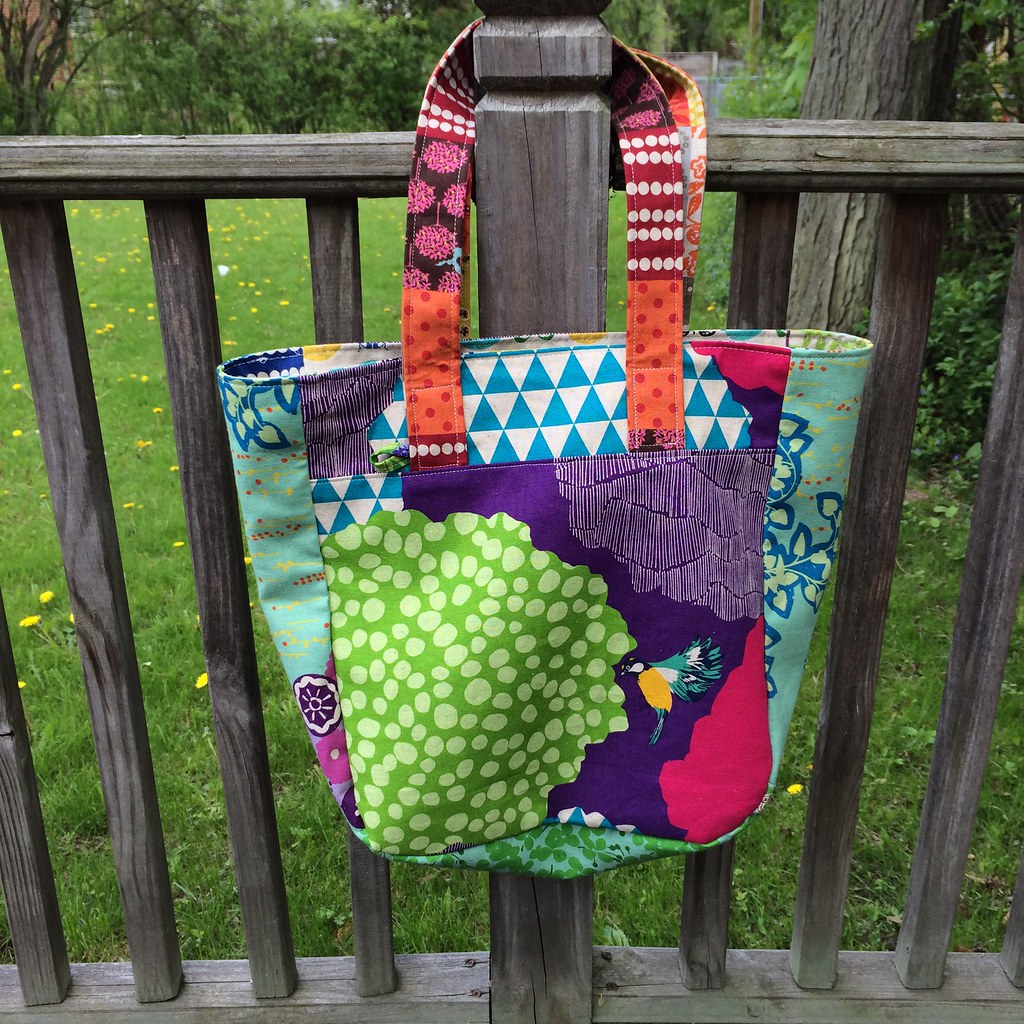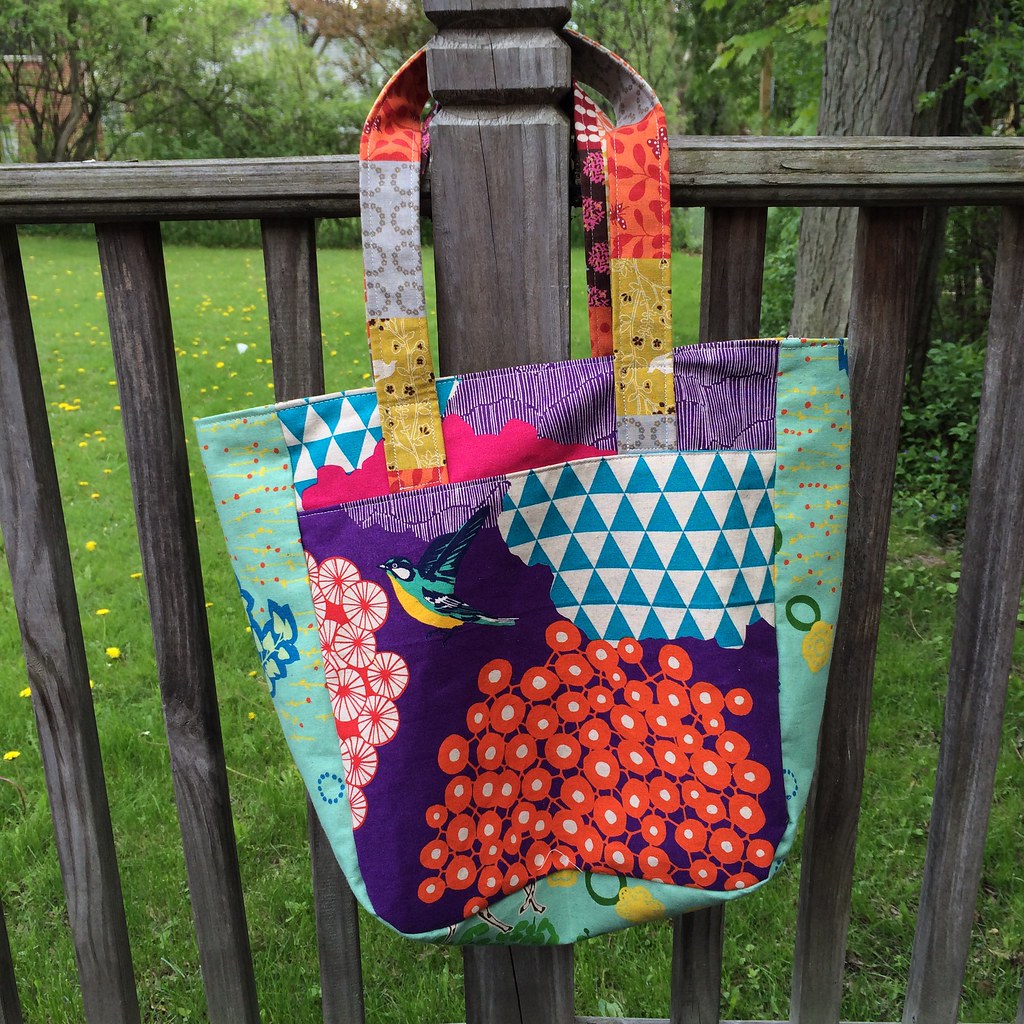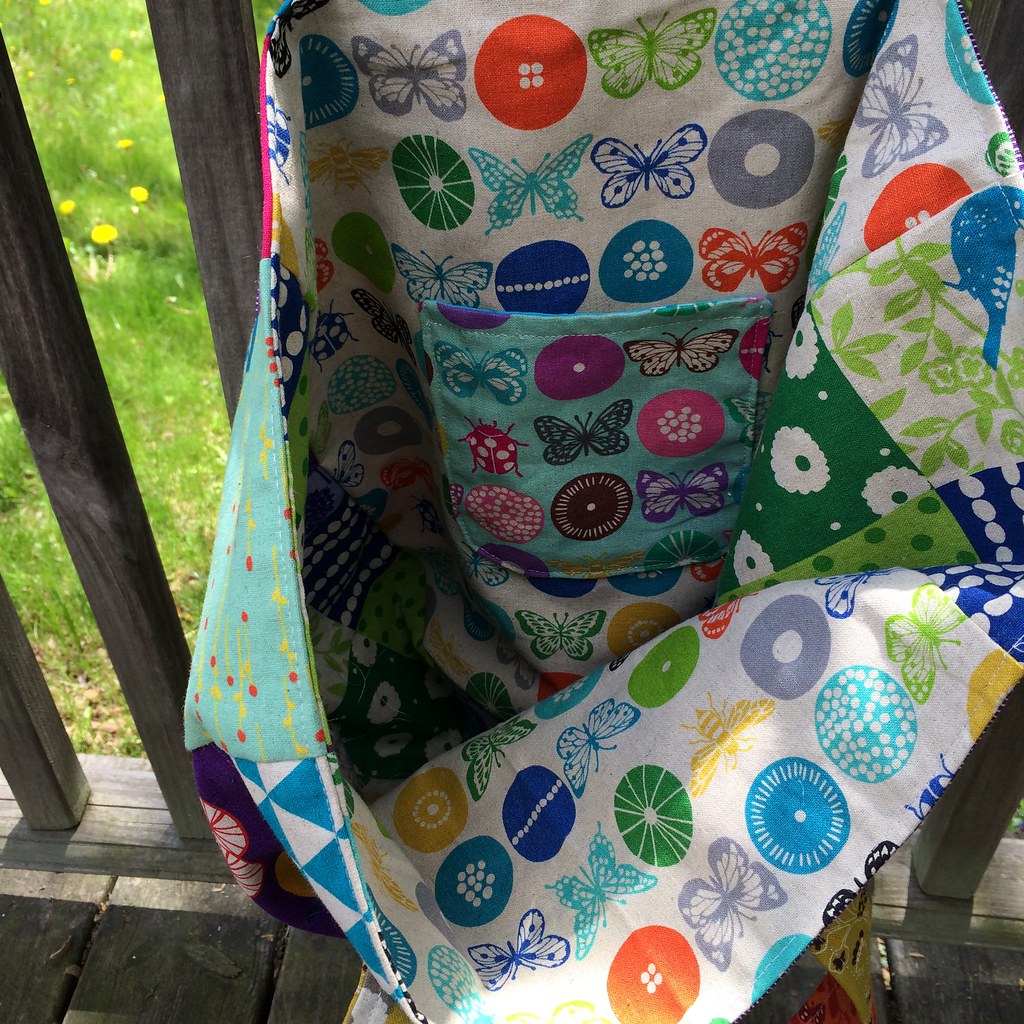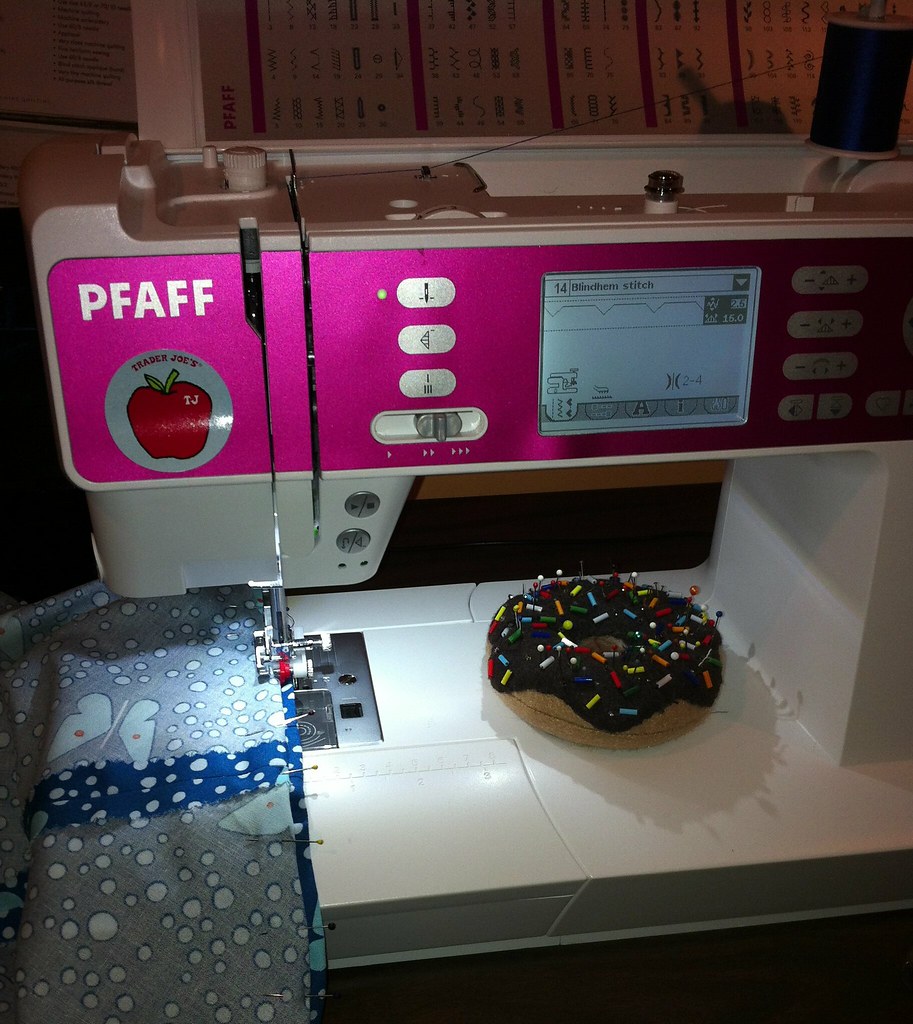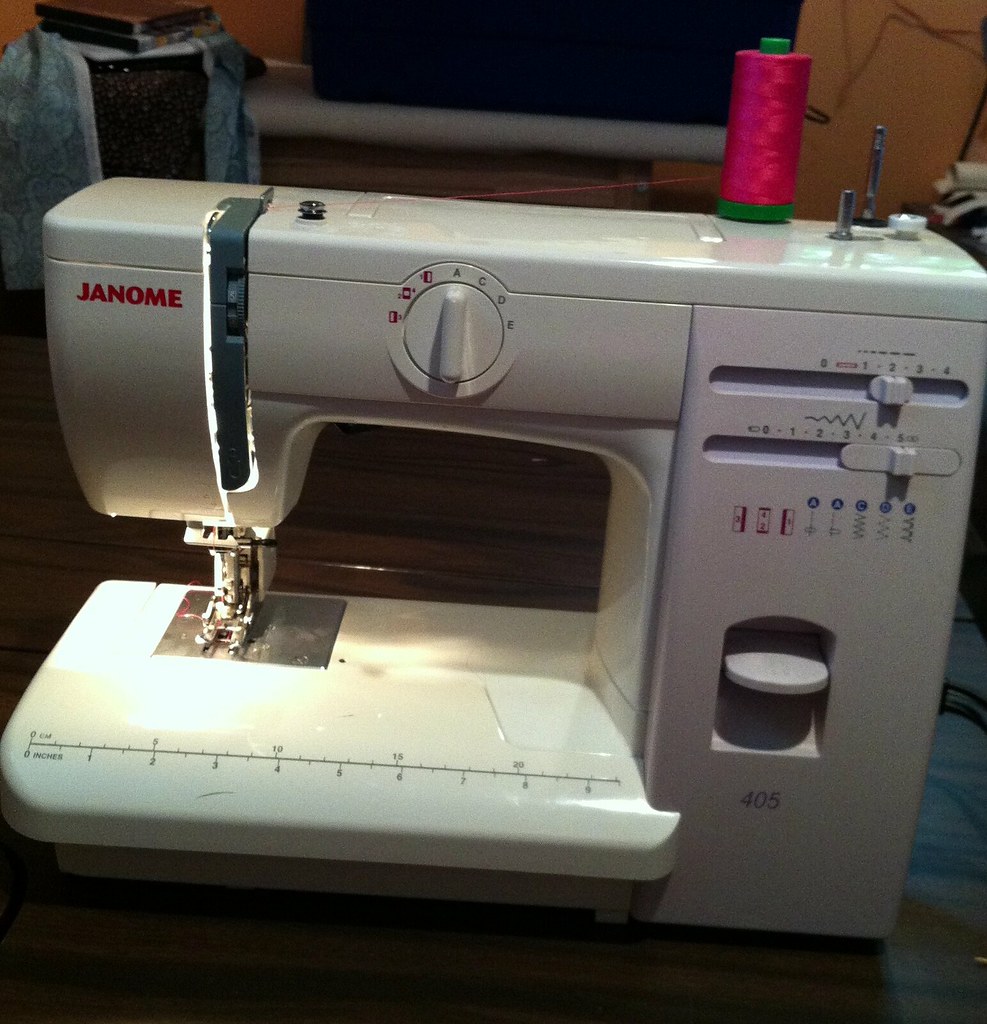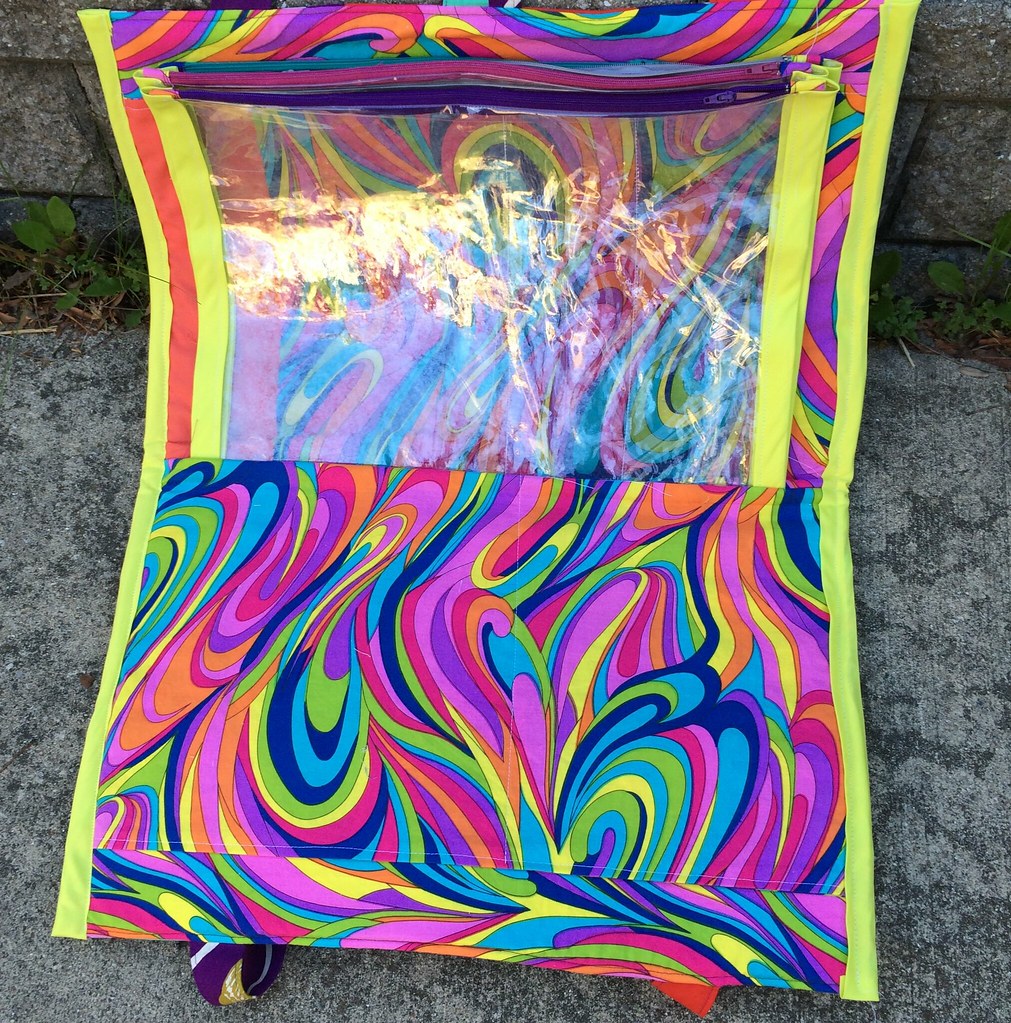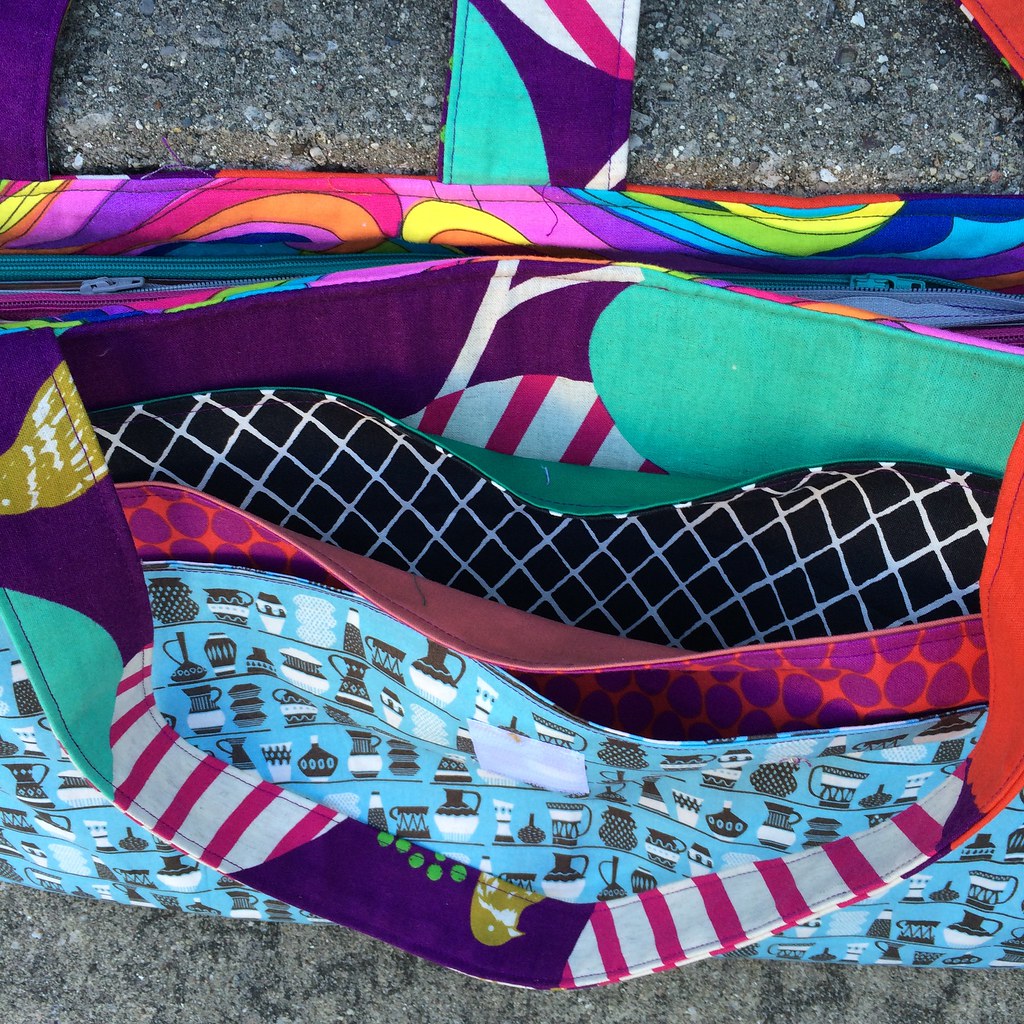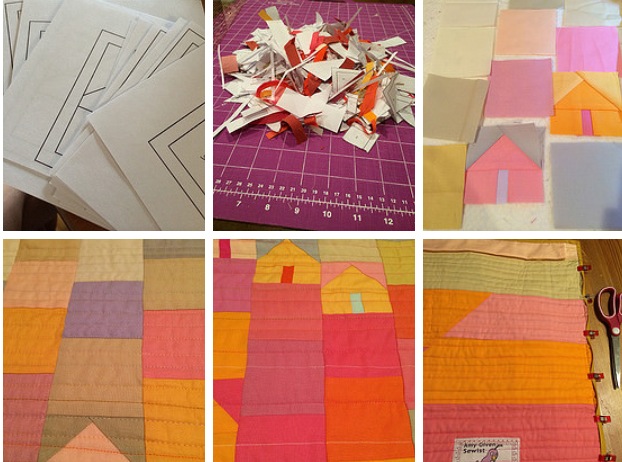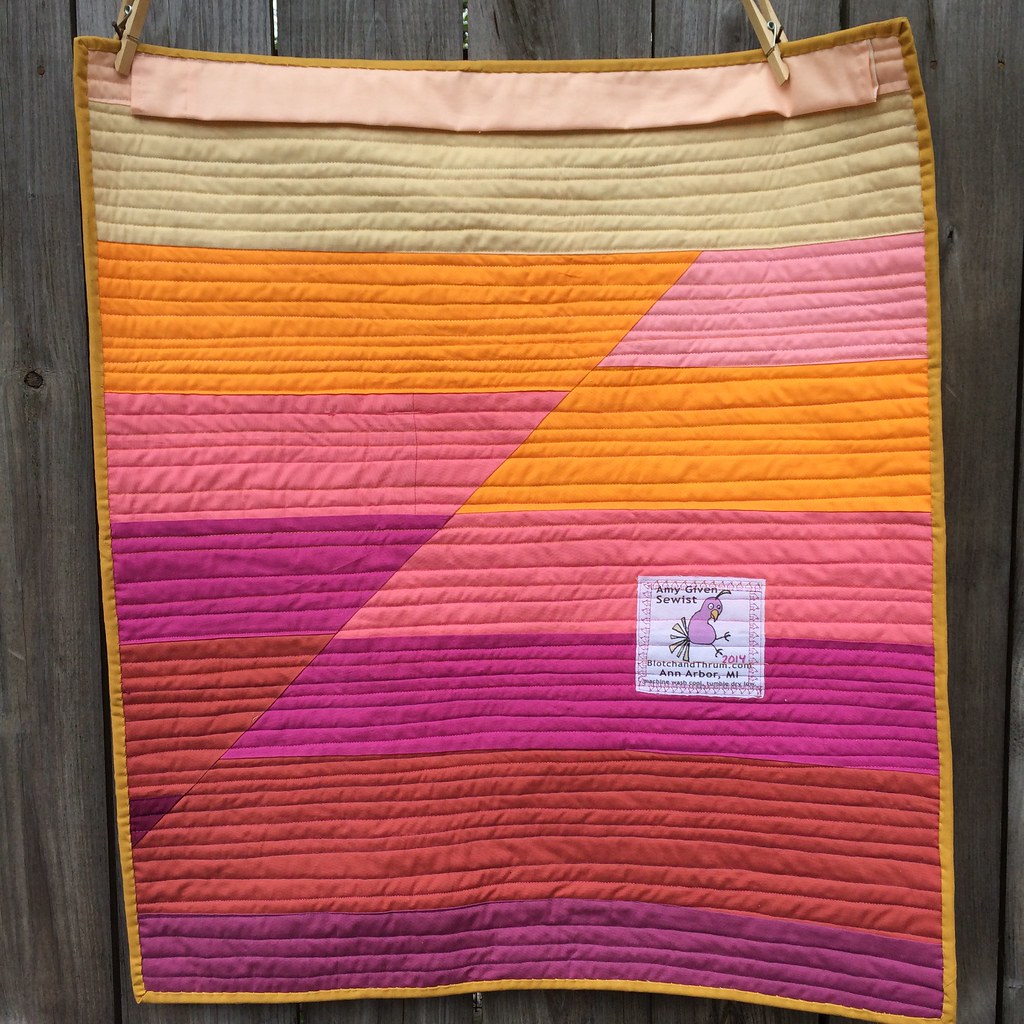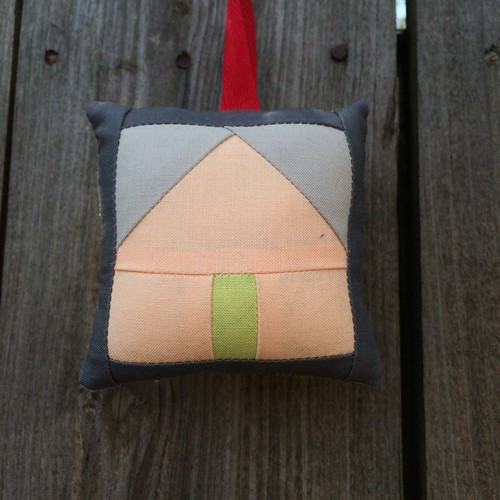I made it as a replacement for our family's "magic bag" a tote the children earned by participating in the summer reading program at the library one year. What made this bag magic was that it had a tag that had a sensor in it that the library's book check out sensor could read and you could check out books without getting out your library card. But the sensor broke after a few months, and a few months later, the library changed check out systems, but it was always and forever a magic bag, though a few weeks ago, we began to notice holes in the bottom. So, clearly, a new library bag was in order. And it had to be big, because we routinely have 30-70 books out at a time. Naturally, I thought of a super tote, because it's the bag I carry to work, and it's huge.
I tried out several combinations of linen fabrics (I, um, have a lot of echino in my stash), before settling on Kalmia as the focal print. Because the scale of the print is massive, something the size of a super tote is a really great choice for it. I considered solids for the gusset and handles, but my desire to use the prints overwhelmed me.
The blue on the gusset and the orange patchwork for the handles are both scraps left over after making pillows for my Echino windowseat.
The inside is insects, and the lining gusset is fabric leftover from the window seat itself. We had someone make the cushion, but they had to promise to give me all the scraps when it was done! I don't think the library bag needs a pocket per say, but having found a scrap of the blue, I couldn't resist putting the two colorways together. The inside of the pocket is this lovely print from Lotus Pond. Which matches really well with the natural insect print. I'm thinking about pairing them again, in another bag.
 |
| I love these bugs! |
I reinforced all the bottom seams, by sewing them twice. (so the turn out open section is on one of the side seams rather than the bottom). I added interfacing to the straps, and cut it to be about 2/3 the size of the strap, so it's sewed into the seams. But, I think being home dec style linen inside and out, it's a pretty sturdy creature. The outer gusset is also a single piece, so no seam on the bottom to wear out.
And if I need to replace it, I've lots of echino left to draw upon, right?
See my super totes of the past: castle bag, super bright super tote
